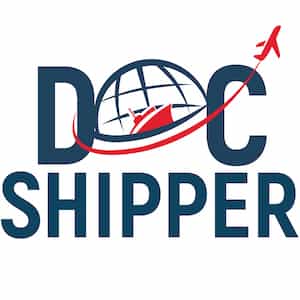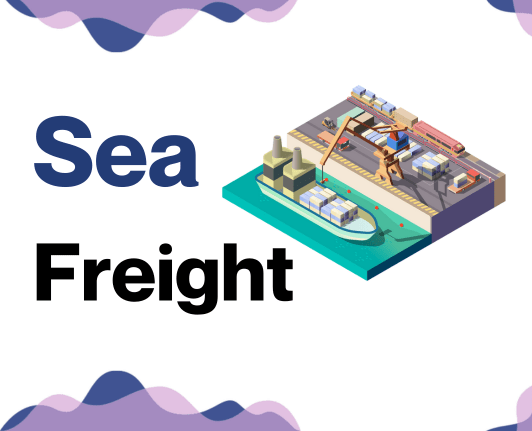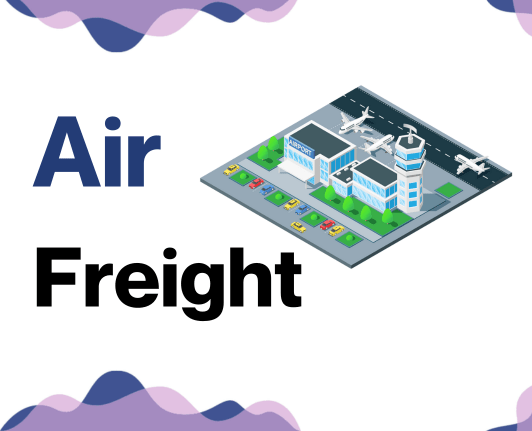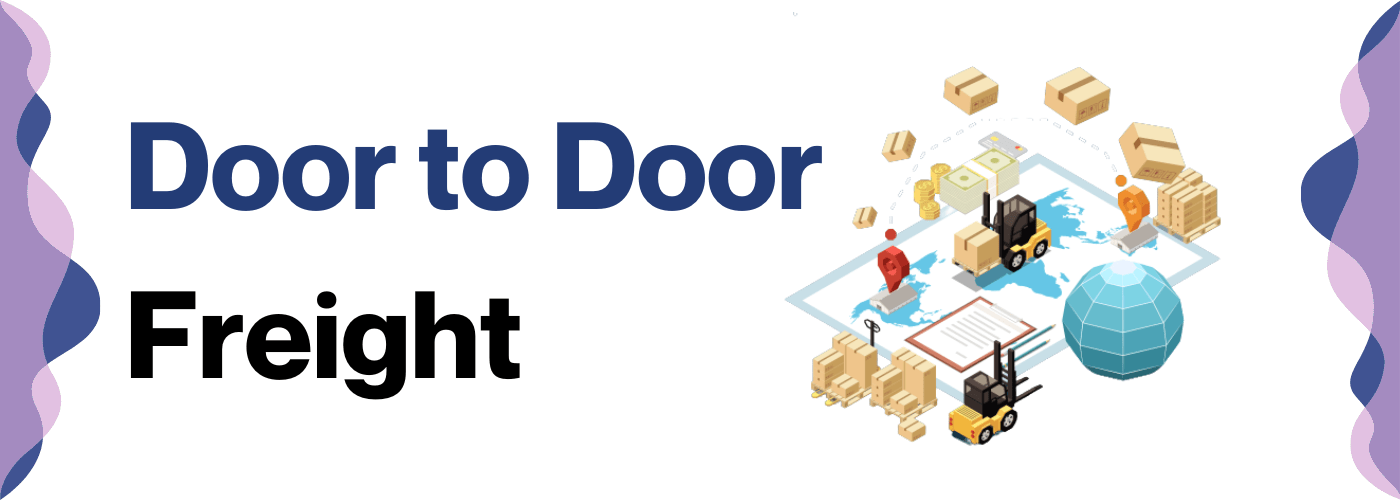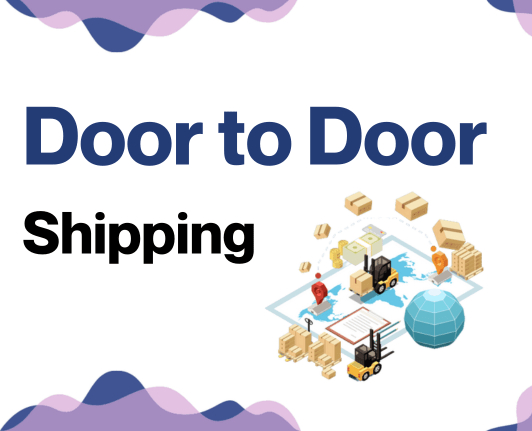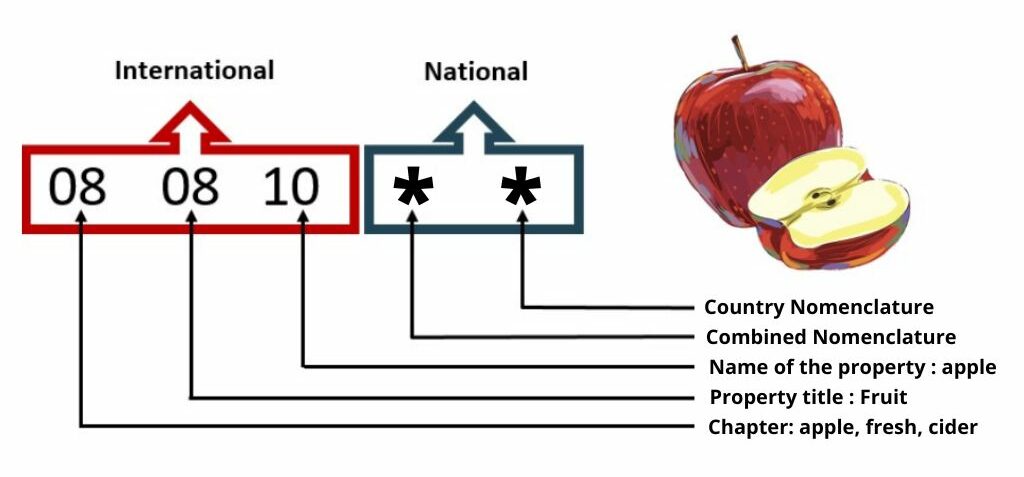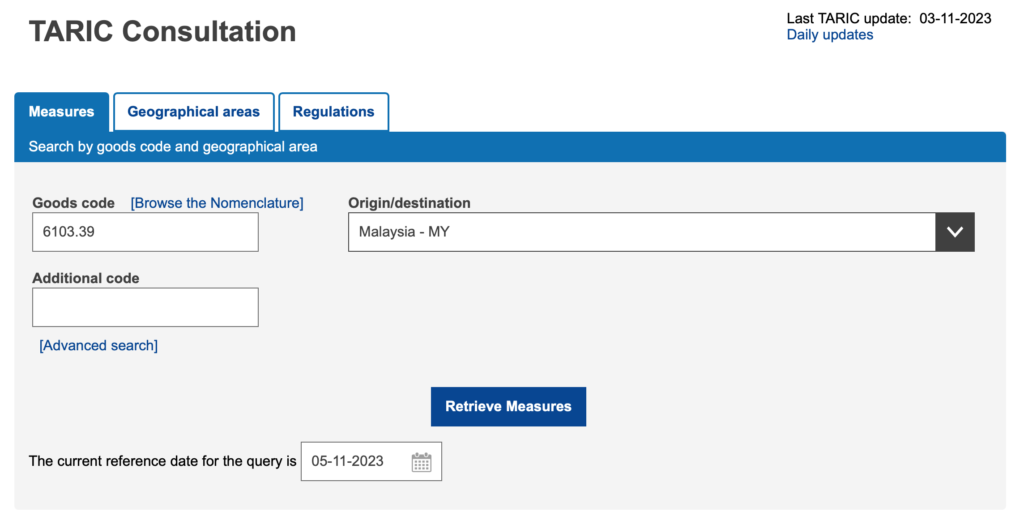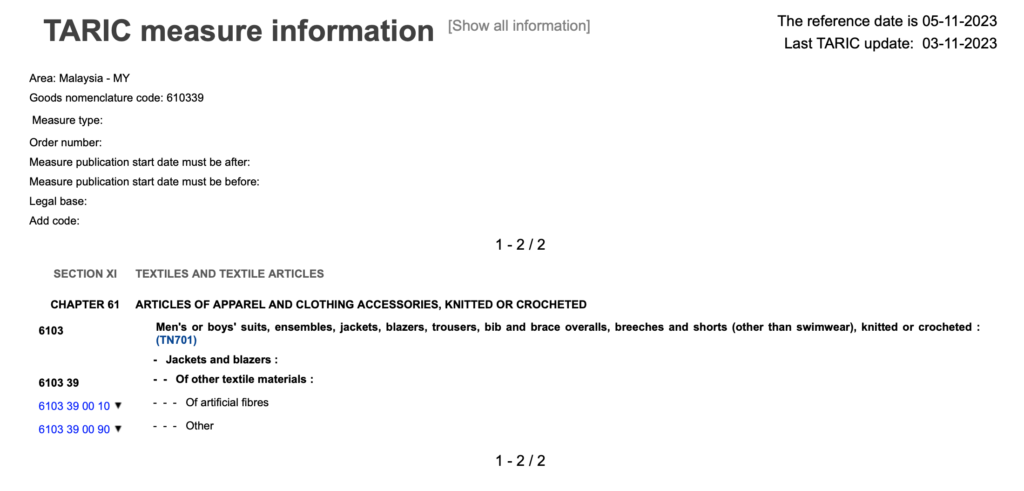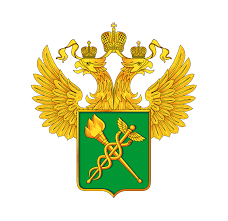Traveling from Malaysia to Russia by road may include encounters with Siberian tigers along the way! Jokes aside, tackling the challenges of shipping goods on this trajectory can be considerably less exotic, yet confusing. Between grappling with perplexing tariffs, unpredictable transit times, and stringent customs rules, it can be a convoluted journey.
Our carefully curated guide dives into key aspects of freight transport from Malaysia to Russia – everything from the most suitable freight option for your business, now to handle customs clearance, to understanding duties, taxes, and beneficial insights designed exclusively for businesses.
We will also shed light on how to effectively combat common pitfalls during your shipping journey, enabling you to streamline your operations effectively. If the process still feels overwhelming, let DocShipper handle it for you! With our expertise, we will manage all your international shipping needs, turning challenges into success.
Table of Contents
Which are the different modes of transportation between Malaysia and Russia?
It's like being at a vacation crossroad: drive a car for immediacy or ride a train for its scenic route? Same with transporting goods across the 4,800 miles separating Malaysia and Russia. With no direct sea route, think of air freight as the 'express elevator' - quick but costly. Road and rail freight, the 'scenic route', cut through many borders, hence potentially more complicated—like an adventurous road trip with multiple pit-stops. The choice depends largely on your shipment specifics - size, urgency, or budget. Select wisely, just like picking a journey's transport to make it smooth and enjoyable.
How can DocShipper help?
Shipping goods from Malaysia to Russia? Let DocShipper simplify the process for you. Our experts handle all aspects from transport organization to customs clearance, ensuring a seamless journey for your freight. Ready for hassle-free shipping? Contact us for a free estimate in less than 24 hours. Have queries? Our consultants are just a call away.
DocShipper Tip: Sea freight might be the best solution for you if:
- You're dealing with hefty quantities or oversized goods. Sea transport is your go-to for maximizing space without stretching your budget.
- Time sensitivity isn't a concern for your shipment. Ocean freight is known for its leisurely pace, especially when compared to the speed of air or rail.
- Your supply chain connects key international harbors. This positions you to take full advantage of a wide-reaching network of ocean trade routes.
Sea freight between Malaysia and Russia
The robust trade relationship between Malaysia and Russia is dominated by ocean freight due to its cost-effectiveness for high-volume shipments. However, it might not be fast as air, but it forms a bridge that connects vital hubs like Port Klang in Malaysia and Port of Novorossiysk in Russia. Intricate challenges often surface when undertaking this transit, from misunderstood customs protocols to overlooking the unique logistics environment of both countries. Mishaps can occur, but by following specific best practices, they can be avoided. This guide will untangle these complexities, like a compass guiding a ship through stormy waters, enabling businesses to sidestep common pitfalls and capitalize on valuable trade opportunities. It's designed for shippers akin to a helm to a sailor, providing a clear map to sail through the vast operational sea of international freight smoothly. Think of it as a field map, designed to hand you the victory in the challenging game of international sea cargo.
Main shipping ports in Malaysia
Port Klang
Location and Volume: Located in Selangor, Port Klang holds the status of Malaysia's busiest port, handling approximately 12 million TEUs annually. Its two main terminals, Northport and Westport, cater to all types of cargo.
Key Trading Partners and Strategic Importance: Key trading partners include China, Singapore, Indonesia, USA, and India. This port holds strategic significance as it's connected to about 120 countries and 500 ports worldwide.
Context for Businesses: If you aim to reach global markets, consider making Port Klang a key part of your logistics strategy thanks to its immense capacity, comprehensive cargo-handling facilities, and strategic location close to major international shipping lanes.
Port of Tanjung Pelepas
Location and Volume: Positioned in the state of Johor, the Port of Tanjung Pelepas is strategically situated at the confluence of the main East-West shipping lanes. It handles around 9 million TEUs annually.
Key Trading Partners and Strategic Importance: China, Singapore, and Germany are among the key trading partners. This port has managed to achieve a rapid rise to prominence and has become a significant port-of-call for major shipping lines.
Context for Businesses: If speed and efficiency are significant considerations in your shipping strategy, you may want to factor in the Port of Tanjung Pelepas, renowned for its excellent turnaround times and efficient services.
Penang Port
Location and Volume: Nestled in the state of Penang, Penang Port is essential for regional trade, handling around 1.2 million TEUs of cargo annually.
Key Trading Partners and Strategic Importance: Major trading partners include China, the USA, Singapore, Japan, and Thailand. The port's strategic importance lies in its proximity to the Malacca Strait, one of the busiest waterways worldwide.
Context for Businesses: If you're focusing on southeast Asian markets or looking for a strategically located transit point, Penang Port’s advantageous location and broad service offerings could make it a prime choice for your logistics plan.
Bintulu Port
Location and Volume: Located in Sarawak, Bintulu Port is particularly crucial for the oil and gas industries. Its annual volume of cargo handled reaches around 59 million tonnes.
Key Trading Partners and Strategic Importance: Predominantly serving South East Asia, it holds a dominant role in the LNG (Liquefied Natural Gas) export industry, given its proximity to the natural gas fields.
Context for Businesses: For those integrating LNG or oil into their trade, Bintulu Port may serve as a critical link given its strong footholds in the oil and gas sector.
Kuantan Port
Location and Volume: Found in the state of Pahang, Kuantan Port is a multi-cargo seaport with an annual cargo volume of 30 million freight weight tonnes.
Key Trading Partners and Strategic Importance: Major trading partners include China, Singapore, and Indonesia. Kuantan Port is considered the gateway to the east coast of Peninsular Malaysia with its deepwater capabilities, capable of catering to heavier, bulkier ships.
Context for Businesses: If your business involves bulk cargo and requires deepwater port capabilities, Kuantan Port might be a substantial link in your logistics chain.
Kota Kinabalu Port
Location and Volume: Located in Sabah, Kota Kinabalu Port mainly serves local trading needs, handling over 15 million weight tonnes each year.
Key Trading Partners and Strategic Importance: Predominantly dealing with imports and exports within the BIMPEAGA (Brunei-Indonesia-Malaysia-Philippines East ASEAN Growth Area) region makes it strategically significant for ASEAN trade.
Context for Businesses: If your commerce is focused on ASEAN markets, particularly BIMPEAGA, the Kota Kinabalu Port might be a valuable addition to your logistics strategy due to its regional connectivity.
Main shipping ports in Russia
Port of Novorossiysk
Location and Volume: The port is situated on the northeastern coast of the Black Sea, in Novorossiysk, Russia’s main export port. It handles a significant amount of Russia's grain exports, with a shipping volume of over 142 million tons per year.
Key Trading Partners and Strategic Importance: The port's key trading partners include EU countries, Turkey, and Arab nations. It plays a vital role in Russia’s trade, housing the Novorossiysk Grain Plant amongst numerous other facilities.
Context for Businesses: For businesses exporting grain or other agri-food products from Russia to countries around the Black Sea or past the Bosphorus, the Port of Novorossiysk can be critical to optimizing your transport logistics.
Port of St. Petersburg
Location and Volume: Located on the Baltic Sea in the Gulf of Finland, this is the largest Russian port for containers, with a shipping volume over 2 million TEU.
Key Trading Partners and Strategic Importance: Key trading partners are Germany, the Netherlands, South Korea, and China. The port is the last stop on the Marine Facade route, making it crucial in passenger transportation and cruise ships.
Context for Businesses: If you're exporting goods to or from Western Europe, the Port of St. Petersburg, with its extensive container handling capabilities, could be crucial to your logistical set up.
Port of Vladivostok
Location and Volume: Situated on the Golden Horn Bay, close to Russian borders with China and North Korea, this port caters for over 20 million tons of cargo annually.
Key Trading Partners and Strategic Importance: The port's primary trading partners include other Pacific Rim countries such as China, Japan, and South Korea. As the main point of entry for Russia’s Pacific Fleet, it holds significant strategic importance.
Context for Businesses: Businesses shipping to and from nations in the Pacific Rim would benefit from including the Port of Vladivostok in their shipping strategies, given its proximity and well-developed links to these markets.
Port of Kaliningrad
Location and Volume: This port is located in the Kaliningrad Gulf, on the eastern coast of the Baltic Sea. It handles about 12 million tons of cargo annually.
Key Trading Partners and Strategic Importance: Its central trading partners are Germany and the Netherlands. The port is crucial due to the enclave nature of the Kaliningrad region, separated from mainland Russia, and its strategic location in Europe.
Context for Businesses: If you're shipping goods to or from Russia’s westernmost region, the Port of Kaliningrad would be an efficient option due to its location and strong infrastructure.
Port of Vostochny
Location and Volume: Positioned in the Nakhodka Bay off the Sea of Japan, this port is a key location for shipments of Russian coal and container cargo, handling over 6 million tons of cargo annually.
Key Trading Partners and Strategic Importance: Key partners include China, Japan, and South Korea. As Russia’s first deep-water port, it allows for large vesicle docking, making it an important hub in the region.
Context for Businesses: If your business involves shipping coal out of Russia, the Port of Vostochny, with its dedicated coal handling facilities, may form a useful part of your logistical approach.
Port of Murmansk
Location and Volume: Located in the far northwestern part of Russia on the Barents Sea, this port caters for around 17 million tons of cargo annually and remains ice-free year-round.
Key Trading Partners and Strategic Importance: Its primary trade partner is Norway, and it plays a strategic role as Russia's only ice-free port in the Arctic, making it crucial for northern naval routes.
Context for Businesses: If you're interested in Arctic shipping routes or shipping to and from Scandinavia, the Port of Murmansk would become key in your logistical planning efforts.
Should I choose FCL or LCL when shipping between Malaysia and Russia?
When moving goods between Malaysia and Russia, deciding between Full Container Load (FCL) and Less than Container Load (LCL), or 'consolidation', might seem like a ship in a bottle situation. But it doesn't have to be a daunting task. Your choice has the power to accelerate or hit the brakes on your delivery times, while also swinging your shipping costs. Got a full container's worth or sensitive goods? FCL. Moving smaller quantities? Let's talk LCL. And remember, the right option can mean smooth sailing all the way to the harbor! Let's dive deeper.
LCL: Less than Container Load
Definition:
Less than Container Load (LCL) shipment refers to the shipping method where goods from multiple traders collectively fill up a container. It's a cost-effective approach when you have a smaller shipment that doesn't warrant a full container.
When to Use:
LCL is a flexible option for low-volume shipments and particularly beneficial when your cargo is less than 13, 14, or 15 CBM (cubic meters). This way, you share the container space (and hence the cost) with other consignors.
Example:
Consider a company that manufactures customized furniture in Kuala Lumpur wanting to trade in Moscow. Their monthly order volume is around 12 CBM. Instead of hiring a full container, the company could opt for LCL freight, sharing the container with other businesses, saving on their shipping costs.
Cost Implications:
The cost of LCL shipment mainly depends on the volume of the goods. Given that you only pay for the exact space your cargo takes up, this makes LCL a budget-friendly option for smaller shipments. However, it's important to note that handling charges may arise since the cargo from different suppliers needs to be consolidated and deconsolidated.
FCL: Full Container Load
Definition:
FCL, or Full Container Load, is a type of FCL shipping where you rent an entire container, be it a 20'ft container or a 40'ft container, for transporting goods. This single consignment is not shared with other shippers, ensuring safety due to the intact seal from origin to destination.
When to Use:
If your volumes exceed 13/14/15 CBM (Cubic Meter), it's recommended. FCL becomes increasingly cost-effective the more of the container's capacity you utilize.
Example:
Imagine a furniture manufacturer in Kuala Lumpur needing to send large quantities of furniture to a retailer in Moscow. The bulkiness and volume of the shipment would easily fill at least a 20'ft container. FCL would be the optimal means to safeguard the entire shipment while being economically efficient.
Cost Implications:
Securing an FCL shipping quote generally results in a lower cost per unit the fuller the container is. While higher upfront than LCL, the cost per unit decreases as the container fills up, making it economical for larger volumes. However, remember that costs may also include additional charges like detention and demurrage if the FCL container is not unloaded and returned promptly.
Unlock hassle-free shipping
Confused between consolidation and full container shipping from Malaysia to Russia? Look no further! DocShipper, your dedicated partner in freight forwarding, simplifies the process for businesses. Our ocean freight specialists provide personalized guidance, considering your cargo size, delivery urgency, and budgetary constraints. We offer optimal solutions tailored to your specific needs. Ready for stress-free shipping? Call for a free cost estimation today!
How long does sea freight take between Malaysia and Russia?
Sea freight transit times between Malaysia and Russia take approximately 45-60 days, varying due to the specifics of the actual ports used, the total weight, and the nature of the goods being transported. To get the most accurate quote, it's advisable to contact a dedicated freight forwarder like DocShipper for a personalized estimate.
Here's a glance at the approximate transit times between the major seaports in both countries:
| Malaysia Ports | Russia Ports | Average Transit Time (Days) |
| Port Klang | Port of Novorossiysk | 45 |
| Penang Port | Port of Vladivostok | 49 |
| Bintulu Port | Port of Saint Petersburg | 55 |
| Johor Port | Port of Kaliningrad | 44 |
*Please note that as these are averages, actual times may vary. For the most precise calculations, contact a freight forwarding company like DocShipper.
How much does it cost to ship a container between Malaysia and Russia?
Determining the precise cost of shipping a container from Malaysia to Russia is dynamic, given the ocean freight rates and several influencing variables. Considerations include, but are not limited to, your Point of Loading and Destination, choice of carrier, nature of the goods, and even fluctuating market conditions monthly. As such, pinpointing an exact shipping cost becomes complex. However, worry not! Our dedicated shipping specialists are on hand to carefully scrutinize these factors and work on providing you with the best possible rates, quoting uniquely on a case-by-case basis. You can trust us to guide you through this process and offer feasible solutions tailored to your needs.
Special transportation services
Out of Gauge (OOG) Container
Definition: Out of Gauge (OOG) containers are designed to accommodate cargo that doesn't fit standard shipping pattern due to their weight or dimensions, hence the name 'Out of gauge cargo.
Suitable for: These are perfect for heavy or oversized items, which normal containers cannot accommodate.
Examples: OOG shipping is ideal for large machinery, construction equipment, windmill propellers, yacht or boat shipping, or elements of prefabricated houses.
Why it might be the best choice for you: If you regularly ship large or heavy items that exceed the dimensions of regular containers, OOG Container should be your go-to choice.
Break Bulk
Definition: Break bulk refers to the method where goods are loaded individually, rather than in containers. They are usually hauled on a special container ship with cranes.
Suitable for: This method works well for oversized, heavy items, or goods that need special handling.
Examples: Large machinery or equipment, long metal rods, or pieces of wood are commonly shipped using the break bulk method.
Why it might be the best choice for you: If you're dealing with large, heavy, or non-standard items that cannot be containerized, break bulk is a good option.
Dry Bulk
Definition: Dry Bulk refers to the shipping of loose cargo load such as grains, coal, or minerals that are poured directly into the ship's hold.
Suitable for: Companies dealing with the export or import of commodities like grains, coal, iron ore.
Examples: The highest volumes of dry bulk cargo usually include items like iron ore, grain, coal, cement, and other similar commodities.
Why it might be the best choice for you: If your operations involve the large-scale transportation of commodities, choosing the Dry Bulk method might be the most cost-effective and efficient way to do so.
Roll-on/Roll-off (Ro-Ro)
Definition: Roll-on/Roll-off, often abbreviated as Ro-Ro, is a type of ship specifically designed to carry wheeled cargo which can be rolled on and off the ro-ro vessel.
Suitable for: Vehicles, trailers, caravans, heavy machinery, or any cargo on wheels.
Examples: The Ro-Ro method is commonly used for shipping cars, trucks, trailers, tractors, etc.
Why it might be the best choice for you: If your business involves the shipment of wheeled cargo or if you need a fast loading/unloading process, then the Ro-Ro method might be the ideal choice for you.
Reefer Containers
Definition: Reefer containers are temperature-controlled containers designed to maintain the cargo at a constant temperature, ranging from very hot to well below freezing, during the entire shipping process.
Suitable for: Perishable goods like fruits, vegetables, dairy products, medicines, or any other goods that require a specific temperature.
Examples: Meat exporters, medicine manufacturers, or companies involved in the shipment of Fruits and Vegetables primarily use Reefer containers.
Why it might be the best choice for you: If temperature control is essential for your goods' integrity during shipping, reefer containers will provide the controlled environment that your cargo needs.
Navigating the world of sea freight shipping can be complex, making it crucial to choose a partner like DocShipper who understands your specific shipping needs. Contact us today for a free shipping quote tailored to your needs. Our dedicated team provides a response time of less than 24 hours to ensure your business keeps moving smoothly.
DocShipper Tip: Air freight might be the best solution for you if:
- You're pressed for time or facing a non-negotiable deadline. Air freight delivers unparalleled speed when it comes to transit times.
- Your shipment is modest in size, falling under 2 CBM. Air freight is particularly well-suited for these smaller consignments.
- Your supply chain includes destinations that are off the beaten maritime or rail paths. Air freight gives you access to a comprehensive global airport network.
Air freight between Malaysia and Russia
Journeying your goods from the splendid greenery of Malaysia to the frosty expanses of Russia? Air freight might just be your perfect partner. It's fast, dependable and, surprisingly, it's cost-effective for small, high-value goods. Imagine shipping electronics, medical equipment, or intricate machine parts - these are prime candidates for air freight, combining high worth with lighter weight. But wait, there's more to the tale!
Missteps in air freight can cost you a pretty penny; and boy, are they common! The root cause? Not considering all elements before you ship. For instance, if you're estimating goods price without applying the correct weight formula, you're on a fast track to a troubled budget. Many shippers have stumbled down this path, losing out on hard-earned cash because they missed some best practices. Buckle up, in this guide, we'll arm you with the savvy to dodge these air freight pitfalls and fly your goods from Malaysia to Russia without a hitch.
Air Cargo vs Express Air Freight: How should I ship?
Struggling to decide how best to ship from Malaysia to Russia? Generally, air cargo utilizes space in commercial planes, while express air freight is shipped out on dedicated planes. It's a tough call, because both options have their strengths. But, don't fret, this guide will delve into everything you need to know – from speed and costs to considerations for your specific type of freight, to help you choose the best method for your business.
Should I choose Air Cargo between Malaysia and Russia?
Considering shipping your goods between Malaysia and Russia? Air cargo presents a cost-effective and reliable option for your business. International airlines such as Malaysia Airlines and Aeroflot Russian Airlines have many flights, allowing for efficient transit of your goods. Please note though, that due to their fixed schedules, longer transit times can sometimes occur. It's also worth mentioning that air cargo becomes particularly attractive if you're shipping 100/150 kg (220/330 lbs) or more. Know your budget, plan accordingly, and this method could be your best bet.
Should I choose Express Air Freight between Malaysia and Russia?
Express air freight is a bespoke service using cargo-only planes. It's ideal for shipping goods under 1 CBM or up to 150 kg (330 lbs). Renowned firms like FedEx, UPS, or DHL could expedite your shipments from Malaysia to Russia. This ensures prompt delivery and caters to urgent or time-sensitive needs. This option offers comprehensive tracking, guaranteed delivery dates, and robust customer service, optimizing your logistics process. So if you're handling lighter cargo and looking for speed and reliability, express air freight could be your go-to choice.
Main international airports in Malaysia
Kuala Lumpur International Airport
Cargo Volume: With a cargo volume of over 1.5 million tonnes per year, this is one of the busiest cargo handling airports in the region.
Key Trading Partners: Major trading partners include China, Indonesia, Singapore, Japan, and the United States.
Strategic Importance: Located in the capital city, KLIA is strategically crucial as it allows easy access to all the major economies in the Asia-Pacific region. Its compatibility with wide-bodied freighter aircraft adds to its strategic importance.
Notable Features: KLIA has a comprehensive air cargo system, swift customs clearances, and state-of-the-art facilities, including a cargo mega terminal specifically designed for high volume air freight.
For Your Business: If you're strategizing for high volume shipments, consider KLIA. The fast processing times may reduce your shipping time and associated costs.
Penang International Airport
Cargo Volume: As a hub for cargo transportation, the airport handles around 360,000 tonnes of cargo annually.
Key Trading Partners: Important trading partners include Indonesia, the United States, China, Singapore, and the United Arab Emirates.
Strategic Importance: This airport provides a gateway to northern Malaysia and connects international businesses to a significant market area.
Notable Features: A new cargo complex, with an annual capacity of 360,000 metric tonnes, capable of housing six B747 cargo aircraft simultaneously.
For Your Business: If your operations are based in Northern Malaysia or nearby regions, consider choosing Penang International for your shipments as it may offer logistical benefits pertaining to time efficiency and cost-effectiveness.
Sultan Abdul Aziz Shah Airport
Cargo Volume: Often referred to as Subang Skypark, it handles about 100,000 tonnes of cargo per year.
Key Trading Partners: Major trading partners include China, Singapore, Japan, Vietnam, and Australia.
Strategic Importance: Given its location close to Kuala Lumpur, the airport provides easy access to the city and is a vital airport serving the domestic and regional needs of the area.
Notable Features: The airport is equipped with modern terminal buildings, well-furnished with all essential passenger amenities. Additionally, it has a separate cargo terminal that is equipped to handle a sizable volume of goods.
For Your Business: If you have small to medium volume shipments and need to keep the transportation time minimal, the Subang Airport's location could be a strategic choice.
Senai International Airport
Cargo Volume: Senai International Airport handles over 100,000 metric tonnes of air cargo annually.
Key Trading Partners: Major trade partners include Singapore, United States, Indonesia, China, and Thailand.
Strategic Importance: As part of the Iskandar development region in Johor, the airport is set to play a crucial role in supporting future economic growth.
Notable Features: A designated Free Zone area providing benefits for businesses importing and exporting goods.
For Your Business: If your business operations are located in the southern areas of the peninsula, consider using Senai International Airport for its Free Zone benefits and its ability to handle large cargo volumes.
Kuching International Airport
Cargo Volume: Kuching International Airport manages approximately 22,000 tonnes of cargo annually.
Key Trading Partners: Predominant trading partners include China, Singapore, Australia, Japan, and the United Kingdom.
Strategic Importance: The facility serves as a gateway to Sarawak on Borneo, making it significant for businesses dependent on the East Malaysian market.
Notable Features: Despite its modest size, Kuching International has a modern cargo terminal with the capability to handle all types of freight, including delicate and time-sensitive goods.
For Your Business: If your market is focused on East Malaysia or Brunei, Kuching International Airport could be part of an effective logistics strategy due to its strategic location and cargo handling capabilities.
Main international airports in Russia
Domodedovo International Airport
Cargo Volume: Domodedovo International Airport ranks among the top three Russian airports in freight volume, with a capacity to handle more than 400,000 tons of cargo annually.
Key Trading Partners: Regularly connects with Europe, Asia, North America, and Africa facilitating trade with countries like Germany, China, the United States, and the United Arab Emirates.
Strategic Importance: Its location in Moscow, Russia’s capital, provides businesses significant access to Russian and Eastern European markets.
Notable Features: It hosts a well-equipped cargo terminal with technologically advanced facilities for both refrigerated and general cargo.
For Your Business: Considering Domodedovo’s substantial international reach and advanced cargo handling facilities, it's an optimal choice for businesses looking to penetrate Russian and Eastern European markets.
Sheremetyevo International Airport
Cargo Volume: Sheremetyevo International Airport is the second busiest airport in Russia regarding freight traffic with a capacity to handle over 300,000 tons of cargo annually.
Key Trading Partners: Handles freight transportation majorly to European countries, the USA, China, Japan, and Middle Eastern nations.
Strategic Importance: Its proximity to Russia’s capital city Moscow makes it a prime trade gate to/from Russia.
Notable Features: It encompasses several cargo terminals, offering automated cargo handling and storage systems and three divisions for mail, storage, and handling.
For Your Business: Sheremetyevo's outstanding cargo facilities combined with its strategic position make it beneficial for entities planning regular trade with European and Middle Eastern countries.
Pulkovo Airport
Cargo Volume: With the capacity to handle over 70,000 tons of cargo annually, Pulkovo Airport is a key cargo hub in northwestern Russia.
Key Trading Partners: Europe, China, and the Middle East.
Strategic Importance: Located in Saint Petersburg, Pulkovo serves a significant trading city with access to the Baltic Sea.
Notable Features: Its modern cargo complex hosts a number of cargo airlines and offers comprehensive cargo handling services.
For Your Business: If your shipping strategy revolves around trading with the Baltic states or the Nordic countries, Pulkovo's strategic location and comprehensive services can be of great advantage.
Vnukovo International Airport
Cargo Volume: Vnukovo can handle over 200,000 tons of cargo annually.
Key Trading Partners: Relations with numerous countries in Europe, Asia, Africa, and the Americas.
Strategic Importance: As one of the three main airports in Moscow, it holds a strategic importance in global trading.
Notable Features: An air cargo terminal equipped with an automated system for processing cargo documents.
For Your Business: Your business will benefit from Vnukovo due to its ability to handle large cargo volumes and quick processes, which can significantly cut down on shipping times.
Koltsovo Airport
Cargo Volume: Handles over 30,000 tons cargo annually.
Key Trading Partners: Primarily works with countries in Asia and Europe.
Strategic Importance: Located in Yekaterinburg, this airport is ideally situated for businesses that trade with western Asian markets.
Notable Features: Houses a modern cargo terminal with comprehensive facilities to handle a diverse range of goods.
For Your Business: Koltsovo is an excellent fit for your business if your trade partners are located in western Asia or Eastern Europe, its comprehensive cargo handling facilities can ensure your goods reach their destination swiftly and securely.
How long does air freight take between Malaysia and Russia?
Shipping between Malaysia and Russia by air freight roughly takes an average of 5-7 days. However, remember, these timings are not set in stone as they can vary. Factors such as your cargo's specific start and end airports, the weight and type of goods being transported, even the specific nature of those goods, all play part in determining the actual transit time. If you need more detailed and precise timings tailored to your shipment, consulting with an expert freight forwarder such as DocShipper is highly recommended.
How much does it cost to ship a parcel between Malaysia and Russia with air freight?
Shipping prices between Malaysia and Russia considerably range due to factors like airport proximity, package dimensions, weight, and cargo type. Even so, anticipate an average cost of around $3.50 - $5.00 per kg. It's important to note specific prices aren't possible to provide without a detailed understanding of your needs. Our specialized team quotes on an individual basis, assuring you the best possible rates. Feel free to reach out and let us collaborate on your shipping requirements. Contact us and receive a free quote within 24 hours.
What is the difference between volumetric and gross weight?
Gross weight refers to the overall weight of the product and its packaging, while volumetric weight considers the space the package occupies in relation to its weight. Let's break down how these measures are calculated in air freight services.
Air cargo typically uses this formula for volumetric weight calculation: Length (cm) x width (cm) x height (cm) / 6000. Express air freight, on the other hand, divides the result by 5000 instead.
Let's suppose you wish to send a package that is 40cm x 30cm x 20cm in size and weighs 15 kg. For air cargo, the volumetric weight is calculated as: 40 x 30 x 20 / 6000 = 4 kg (approximately 8.82 lbs). And for express air freight: 40 x 30 x 20 / 5000 = 4.8 kg (nearly 10.58 lbs).
In contrast, the gross weight of your package is 15 kg (roughly 33.07 lbs). This is a significant difference between volumetric and gross weights.
Why is this important? Simple! Freight charges typically hinge on the higher between the gross and volumetric weight of your package. In our example, shipping costs would be calculated based on the gross weight as it's higher. Understanding these calculations can help you anticipate freight expenses more accurately and optimize your packaging process.
DocShipper tip: Door to Door might be the best solution for you if:
- You value convenience and want a seamless shipping process, as door-to-door takes care of every step from pickup to delivery.
- You prefer a single point of contact, as door-to-door services typically provide a dedicated agent to handle all aspects of the shipment.
- You want to minimize the handling of your goods, reducing the risk of damage or loss, as door-to-door minimizes transitions between different modes of transport.
Door to door between Malaysia and Russia
Venturing into the world of international shipping, 'door-to-door' service is a one-stop-shop solution that takes your cargo from its origin in Malaysia right to its final destination in Russia, stress-free. It's cost-effective, efficient, and excellent for tracking. Hold onto your seats as we dive deep into this revolution in logistics convenience. Let's dive in!
Overview – Door to Door
Door to door shipping from Malaysia to Russia: think stress-free logistics. Managing a shipment's every stage, from pick-up to delivery and all the customs procedures in-between, can be a headache. Luckily, door to door service simplifies this process. Advantages? Full control and peace of mind, knowing that your cargo is in professional hands. However, occasional delays may occur due to customs clearance. Amid the tangle of international shipping, it's no wonder DocShipper clients frequently opt for this service. Armed with this knowledge, you're prepared to decide if it's the right choice for your business. So, ready to ship hassle-free?
Why should I use a Door to Door service between Malaysia and Russia?
Ever felt like juggling flaming chainsaws when dealing with international logistics? Well, a Door to Door service might just be the safety net you need. Here's why:
1. De-Stress Your Logistics: The words ‘international freight’ often come along with headache-inducing paperwork and confusing process loops. By choosing Door to Door service, you literally kick back while we pick your goods straight from your warehouse in Malaysia and deliver it directly to the designated location in Russia. No more dealing with multiple freight companies - it's a one-stop-shop!
2. Timely Deliveries: From Kuala Lumpur to Moscow, we've got it covered. Urgent shipments fly through timezones without any hitches. Your shipment takes the most efficient route, ensuring prompt delivery and you meeting your deadlines.
3. Specialized handling: Delicate, bulky, or hazardous- no matter the cargo, Door to Door services offer specialized handling ensuring your cargo stays safe throughout its journey. High-value Russian art pieces or fragile electronic components - they all get the VIP treatment they deserve.
4. End-to-End Accountability: Not knowing where your goods are is equivalent to internet buffering during a binge-watch session - stressful and unwanted. Door to Door service offers chopped tracking, giving you constant visibility and peace of mind.
5. Ultimate Convenience: Last but definitely not least, the convenience Door to Door services bring is unrivaled. You don't have to worry about the grueling trucking process from the port until the final destination. We've got that covered too!
In essence, don't just make shipments; make smart shipments with Door to Door services between Malaysia and Russia. Because, hey, who said logistics had to be complex?
DocShipper – Door to Door specialist between Malaysia and Russia
Experience stress-free door-to-door shipping between Malaysia and Russia with DocShipper. With our complete A to Z service, we expertly manage every step - packing, transportation, and customs clearance - so you can enjoy peace of mind while we handle the logistics. Your dedicated Account Executive is ready and on-hand for support with all shipping methods. For a quick and easy start, reach out to us for a free estimate in less than 24 hours or speak with our consultants at no cost. DocShipper, your trusted partner in comprehensive international logistics.
Customs clearance in Russia for goods imported from Malaysia
Navigating the murky waters of customs clearance, the process of getting imported goods officially approved to enter a country, can be quite intricate, especially between Malaysia and Russia. Falling into a labyrinth of surprising fees, stringent quotas, peculiar licenses, and differing tax regulations isn't uncommon, imposing the risk of your goods being stranded at the border. Understanding these details will help you prevent shipment snags and effectively estimate your expenses. Don't fret, as the upcoming sections will illuminate these complex layers. Remember, whenever you're in a bind, DocShipper is here to lend you a helping hand. Whether you're shipping electronics or textiles, regardless of location, our team can guide you every step of the way. Just reach out with your goods' origin, value, and the HS Code for us to start the estimation process. Now, time to unravel the complexities of customs clearance!
How to calculate duties & taxes when importing from Malaysia to Russia?
In the world of imports, correctly estimating duties and taxes could be the key to maintaining a healthy bottom line. The calculation of customs duties involves a number of elements including the country of origin, the HS code, the customs value, the applicable tariff rate, and any other charges that may be relevant to your shipment.
The country of origin is not just about geography, it's about where your goods were actually manufactured or produced. This may seem straightforward, but with global supply chains, identifying the true country of origin could be a complex task. Fear not, this first step simply means pin down the geographical location where your goods were transformed into their final form. This initial identification process is integral to ensuring the correct duties and taxes are applied, and the right amount of money goes into your business's pocket. Next, navigate the intricate world of HS codes, but that's a topic for another paragraph.
Step 1 - Identify the Country of Origin
Knowing the Country of Origin - Malaysia, in this case, is foundational in international shipping for five core reasons:
1) Trade Pacts: Malaysia and Russia partake in several bilateral trade agreements. These can stimulate huge cuts on import duties, offering you substantial savings on cargo transport.
2) Customs Duties: The import tariffs can fluctuate based on the country of origin. Distinguishing your goods as Malaysian-made can alter the final cost.
3) Product Restrictions: Certain items may face inbound limitations due to concerns related to safety, health, or the environment. Thorough country-specific research helps avoid unnecessary hiccups.
4) Compliance Documents: Specific consignment paperwork links to the origin country. Having this set up early ensures a smoother customs clearance process.
5) Anti-Dumping: Anti-dumping duties may apply to goods deemed sold under fair market value. Malaysia's origin data might place your shipment under this category.
Navigating import from Malaysia to Russia necessitates mastering the specific demands of these two nations. Strive for compliance, cut costs and obtain that valuable peace of mind. Next, a deep dive into the Harmonized System Code awaits. Certainly, successful shipping isn't just about getting there, but about getting there smart.
Step 2 - Find the HS Code of your product
The Harmonized System (HS) Code is a standardized system of names and numbers to classify traded products. Developed by the World Customs Organization, the HS codes are used by customs authorities around the world to identify products for the purpose of levies, controls, and monitoring. Importantly, each code corresponds to a particular type of product, helping ensure your goods move through customs smoothly, and the right taxes are assessed.
Most often, a quick and accurate way to find the HS code for your product is to contact your supplier. They are likely experienced with export and import regulations, and regularly handle inquiries related to HS codes.
If contacting the supplier isn't possible, fear not. We've got you covered. There's a simple process you can follow to find the HS code yourself:
First, you need to use an HS lookup tool. A good one to use is the Harmonized Tariff Schedule. This site provides a straightforward and user-friendly way to find the HS code for your product.
Next, put the product's name in the search bar and press Enter. The results will show a list of potential matches.
Finally, check the 'Heading/Subheading' column in the search results. This section will contain the potential HS codes for your product.
It's important to note, accuracy is crucial when identifying and using HS codes. Inputting an incorrect code can result in delays, misclassifications, and even fines from customs authorities. Ensuring the accuracy of the HS code can save you a lot of potential trouble down the line.
Here's an infographic showing you how to read an HS code.
Step 3 - Calculate the Customs Value
Knowing the customs value is essential in international trade. It's not just the product's price tag, but rather a more comprehensive figure, incorporating your goods' price, international shipping costs, and insurance fees - this trio forms what's known the CIF value. It might sound complex, but it's straightforward: if you have a product valued at $10,000, shipping costs of $1,000, and insurance costing $500, then the customs value to be declared in Russia would be $11,500. All these cover costs up to the destination port, so keep in mind that domestic costs in Russia aren't included. With this formula at your fingertips, you’ll be well-prepared for customs clearance, making your goods' journey from Malaysia to Russia a smoother ride.
Step 4 - Figure out the applicable Import Tariff
An import tariff is a tax imposed by a government on goods imported from another country. Its purpose is to protect domestic producers by raising the price of imported goods.
For shipping goods from Malaysia to Russia, here's how you can identify the tariff:
First, it's imperative to have the Harmonized System (HS) code for your product. Let's say, as an example, you're shipping rubber gloves, which have an HS code of 401519.
Next step is to find the applicable tariff rate. Russia uses a mixed tariff system, which combines both ad valorem (percentage of the product's value) and specific (set amount per quantity) tariffs.
For this leg of your journey, you might engage the help of Russian customs officials or local freight forwarder to look up the correct tariff applicable for your product.
Let's assume the tariff rate specific to rubber gloves is 15%. If your CIF (Cost, Insurance, and Freight) is $10,000, the import duty would be $1,500 (15% of $10,000).
Remember, import tariffs can add a significant cost to your imported goods, so it's pivotal to understand and calculate these costs in advance. By doing so, you're not only being compliant with regulations but are also effectively managing your business's bottom line.
Step 5 - Consider other Import Duties and Taxes
Importing goods from Malaysia to Russia involves more than just the standard tariff rates. Depending on the product type and origin, you may incur additional taxes and duties. Let's unpack this.
Excise duty applies to certain products like alcohol, cigarettes, or vehicles, increasing your import costs. Anti-dumping taxes guard against cheap imports, typically impacting heavier industries like steel production.
But here's the kicker - the VAT rate. It's a significant part of your import cost that is often overlooked. In Russia, as of now, the standard VAT rate is 20%. To calculate your payable VAT, you'd use this formula: VAT = (Customs Value + Import Duty + Excise Duty) VAT rate. For instance, if the customs value of your product is $100, and you're paying $10 as import duty with no excise duty, your VAT would be ($100 + $10) 20% = $22.
Remember, these are simplified examples and actual calculations might vary. It’s essential to understand these charges to anticipate your total import costs accurately. Your freight forwarder can often provide detailed advice tailored to your shipment.
Step 6 - Calculate the Customs Duties
In this step, you'll learn how to determine the customs duties for goods shipped from Malaysia to Russia. The calculation can be broken down into three key equations:
1. If the goods attract Customs Duty but no VAT, you simply multiply the customs value by the Customs Duty rate. For instance, if you have a customs value of $3,000 and a Customs Duty rate of 10%, the duty payable would be $300.
2. If the goods attract Customs Duty and VAT, first compute the duty as above, then add the customs duty to the customs value and apply the VAT rate. So, with the previous values and a VAT rate of 20%, your VAT will be ($3,000 + $300) 20% = $660.
3. Any anti-dumping taxes or Excise Duty will also impact your total charges. For example, if there's a 5% anti-dumping tax and a $100 Excise Duty, your total Customs Duty will be (($3,000 10%) + ($3,000 + $300 + $100) 20%) 105% = $1015.5.
This is just a simplified nutshell. Customs duties can be complex, varying by product and country agreements. That's where DocShipper comes in - we help handle every step of your customs clearance process, anywhere in the world. This ensures you're not overcharged and guarantees compliance. Contact us today for a free quote in less than 24 hours.
Does DocShipper charge customs fees?
While DocShipper, operating as a customs broker in Malaysia and Russia, facilitates seamless customs clearance for your goods, we don't levy the customs duties. Our charges cater to customs clearance service, separate from the actual customs duties and taxes, which go directly to the government. To maintain transparency, we provide you wth official documents from customs, ensuring you only pay what's rightly charged. Think of it like paying a mechanic for their service, while the actual car parts are billed separately. Let DocShipper clear the path for your international shipping!
Contact Details for Customs Authorities
Malaysia Customs
Official name: Royal Malaysian Customs Department
Official website: http://www.customs.gov.my/en/
Russia Customs
Official name: The Federal Customs Service of Russia
Official website: http://eng.customs.ru/
Required documents for customs clearance
Grasping the maze of goods clearance often feels like dodging a bullet. Let's untangle it. We are discussing the Bill of Lading, Packing List, Certificate of Origin, and Documents of Conformity (CE standard) – your lifelines to steer through customs with ease. Understanding these ensures your cargo won't become a hangar's permanent resident! Ready to unravel these? Let's get going.
Bill of Lading
When shipping goods between Malaysia and Russia, the Bill of Lading (BoL) is your best friend. It's an official document that signifies the handover of your goods to the shipping line - it's the key to unlocking your cargo at the destination. But here's a tip: speed up the process with an electronic, or telex, release. It's safe, quick, and you don't have to worry about losing a paper document. For air cargo, that duty is handled by the Air Waybill (AWB). Both documents ensure that your cargo reaches its destination with less hassle. So next time you're coordinating a shipment, remember, playing smoothly with BoL and AWB is the shortcut to fast, stress-free delivery of your goods.
Packing List
Shipping from Malaysia to Russia? A Packing List is your best friend. Whether you're shipping by air or sea, getting the Packing List spot-on is key. An accurate list ensures that Russian customs officers know exactly what’s in your shipment. Sloppy errors can result in delays, fines, or even seizure. Imagine, your cargo is held up because you’ve mistakenly listed 50 boxes instead of 5. A proper packing list is the first step to breezing through Russian customs. Nail your Packing List duties for a smooth shipping experience. After all, your business counts on it.
Commercial Invoice
Shipping goods between Malaysia and Russia? Your Commercial Invoice is a non-negotiable. It is a detailed record of your transaction and the most scrutinized document in the customs clearance process. It should include comprehensive information like your own business details and the recipient's, as well as a thorough description of your goods, including product codes and quantity. Prices, terms of trade, and freight details are also a must. A mismatch between your Commercial Invoice and other shipping papers can turn into hefty fines or, in worst cases, impounded goods. Save yourself the headache, double-check everything inside out, and make sure all documents sing in tune. Goods are just as good as their paperwork, after all.
Certificate of Origin
When shipping from Malaysia to Russia, a crucial document you’ll need is the Certificate of Origin. This certificate confirms the country where your goods were manufactured, and it could be your passport to preferential customs duty rates. For instance, let's say you're shipping rubber gloves made in Malaysia to Russia. With the certificate clearly stating Malaysia as the origin, you may enjoy a lower duty thanks to trade agreements, easing your expenses considerably. So, don't overlook this powerhouse document; its benefits could make a notable dent in your shipping costs.
Certificate of Conformity (CE standard)
The Certificate of Conformity, often abiding by the CE standard, is virtually your passport for your products to freely sail between Malaysia and Russia. It proves that your goods line up with the required European safety, health, and environmental protection standards, vital for market entry. Don't confuse it for quality assurance, though. While quality assurance secures consistent product quality, the certificate guarantees conformance with regulations—a subtle but significant distinction. Unlike the US, where an array of standards exist, the CE or its equivalent is a universally recognized validation in Europe. So, if you want to steer your goods smoothly through customs, it's crucial you get this document in place, ticking a major box in your customs clearance checklist. The process may seem daunting, so consider professional help to get it just right. But remember, each compliance gained is a business barrier removed.
Your EORI number (Economic Operator Registration Identification)
When exporting goods from Malaysia to Russia, securing an EORI number isn't a necessary step since Russia isn't part of the European Union. However, should your business endeavor to operate within EU territories in the future, acquiring an EORI number becomes crucial. The EORI number is a unique identifier used to track imports and exports within the EU. It simplifies the customs process and accelerates procedures at the border. Registration is quite straightforward, often done online, and is a one-off process, meaning once you have it, it's valid forever. Remember, in a world that's increasingly interconnected, possessing your EORI number can help streamline your business operations within EU countries.
Get Started with DocShipper
Tired of navigating the complexities of Malaysian and Russian customs? Let DocShipper handle it. We're experts in customs clearance and can streamline the process for you. No more confusion, no more delays. Want to make your shipping hassle-free? Reach out to us! We offer a free quote in under 24 hours. It's your move. Make it count.
Prohibited and Restricted items when importing into Russia
Unsure about what items can land you in trouble when importing into Russia? It's crucial to understand the rules to avoid costly mistakes! This guide highlights prohibited and restricted items to safeguard your business from legal hiccups, minimizing unnecessary headaches during your shipping process.
Restricted Products
- Pharmaceutical goods: You have to apply for a permit issued by the Ministry of Industry and Trade.
- Chemical substances: A special license from the Federal Service for Technical and Export Control is required.
- Military goods and items: Get your license from the Federal Service for Military Technical Cooperation.
- Nuclear materials, equipment, and technology: An authorization from the Federal Service for Environmental, Technological, and Nuclear Supervision should be obtained.
- Dual-use items: Apply for a permit from the Federal Service for Technical and Export Control.
- Precious metals and gemstones: For such items, a special license is needed from the Ministry of Finance.
- Cultural valuables (artifacts, art pieces): Obtain your permit from the Ministry of Culture.
- Flora and fauna (including CITES certified species): A permit is required from the Ministry of Natural Resources and Environment.
- Medical equipment: Register your items with the Federal Service for Surveillance in Healthcare.
- Raw materials and food items (alcoholic beverages, grain, fish): Apply for a permit from the Federal Service for Veterinary and Phytosanitary Surveillance.
- Tobacco products: You need authorization from the Ministry of Industry and Trade.
Prohibited products
- Narcotic, psychotropic substances, and their precursors, apart from the substances used for healthcare.
- Pornographic materials or items.
- Explosive or hazardous materials and substances.
- Weapons and ammunition, unless you have exclusive permission.
- Agricultural products without the proper phytosanitary certificates.
- Radioactive materials.
- Plants and seeds without necessary phyto certificates.
- Meat and dairy products from certain countries due to veterinary restrictions.
- Certain types of literature which promote hate speech or violence.
- Counterfeit currency.
- Chemical weapons and equipment used for their production.
- Drugs without proper licensing or prescription.
- Poisonous substances without proper licenses.
- Items that violate intellectual property rights.
- Rare, threatened, or endangered species of flora and fauna, and any products made from them.
- Cultural valuables over 50 years old.
Are there any trade agreements between Malaysia and Russia
While currently, there's no established Free Trade Agreement (FTA) or Economic Partnership Agreement (EPA) between Malaysia and Russia, both nations are part of the Asia-Pacific Trade Agreement, which may influence your shipping. Ongoing discussions for a possible FTA between the Eurasian Economic Union, which Russia is a part, and Malaysia might offer future opportunities to reinstate your business strategies and create a smoother shipping process. Infrastructural projects, like the Trans-Siberian Railway, can open new shipping routes, greatly benefiting your sea-to-rail transshipment.
Malaysia - Russia trade and economic relationship
Historically, Malaysia and Russia have cultivated a beneficial trade partnership punctuated by distinctive milestones. This bond was further solidified in 2019 when a Memorandum of Understanding was signed to strengthen economic cooperation. Major commodities traded include electrical and electronic equipment from Malaysia and top-quality mineral fuels and lubricants from Russia. Notably, Russian investments in Malaysia, primarily in petrochemicals and metal sectors, totaled approximately USD$60 million as of 2021. Concurrently, Malaysia has an active presence in Russia's retail and ICT sectors. In 2020, the total volume of trade was recorded at USD$2.7 billion, highlighting this thriving bilateral relationship and the substantial economic opportunities it offers.
Your Next Step with DocShipper
Finding the right sea route from Malaysia to Russia or untangling the dense Russian customs regulations can detour your business's focus. At DocShipper, our goal is to smoothen these difficulties for you. With our comprehensive services, we manage your freight, handle administration, and tackle customs, making it a stress-free ride all the way to Russia. Let's move forward. Contact us now and let your shipping worries sail away!
Additional logistics services
Uncover the full spectrum of DocShipper's capabilities: your all-inclusive partner managing storage, packing, and insurance, streamlining your entire supply chain for seamless success.
Warehousing and storage
Finding the right warehousing solution can be tricky, especially when your cargo needs specific conditions like temperature control. Don't let this issue derail your Malaysia-Russia shipping plans. Our services cater to all your warehousing needs while keeping your goods in excellent condition. More on our specialized solutions here: Warehousing.
Packaging and repackaging
Shipping between Malaysia and Russia brings unique challenges, such as differing climate and journey duration - making proper packaging crucial. Collaborating with a trustworthy agent ensures your goods remain undisturbed, whether delicate electronics or bulky machinery. Picture your fragile decoratives wrapped snugly, arriving undamaged, despite a long, icy journey. More info on our dedicated page : Freight packaging.
Cargo insurance
Transporting goods isn't like safeguarding your warehouse against fire. Unforeseen events can occur during transit, from damage due to rough handling to loss at sea. For instance, imagine your precious cargo riding a stormy wave, without insurance. Gives you chills, right? Cargo insurance therefore acts to minimize such risks, giving your shipment a reliable safety net. It's not just about recovery, it's about prevention. Get covered and keep those transport nightmares at bay. More info on our dedicated page: Cargo Insurance.
Supplier Management (Sourcing)
Struggling to find reliable suppliers in distant places like Asia and Eastern Europe? DocShipper can solve your dilemma. We'll manage the entire procurement process, from locating trustworthy suppliers to crossing language barriers. By holding your hand every step of the way, we ensure your company thrives—even across continents. Learn about our method on our dedicated page: Sourcing services.
Personal effects shipping
Relocating between Malaysia and Russia? Worried about your grandmother's porcelain or oversized furniture? Fret not. Our 'Personal Effects Shipping' provides professional and flexible services ensuring your cherished pieces arrive safe and sound. Ever moved a grand piano across seas? We have. Count on us for that expertise. More info on our dedicated page: Shipping Personal Belongings.
Quality Control
Quality inspections are a keystone in your Malaysia-Russia trade tryst. Imagine shipping tailored furniture, only to discover misaligned hinges at the Moscow delivery point! With thorough vetting during manufacturing, this service eradicates such nightmares, ensuring your goods meet the highest standards at every stage. Dodge potential crises—choose peace of mind. More info on our dedicated page: Quality Inspection.
Product compliance services
When shipping your goods, keeping in line with regulatory requirements is crucial. Our Product Compliance Services take the hassle out of this process, offering in-laboratory testing for certification assurance. This ensures your products meet all compliance standards at the destination, reducing unforeseen challenges. Think stress-free, seamless shipping that respects local standards, every time. Curious to learn more? Make a pit-stop at our dedicated page: Product compliance services.
FAQ | For 1st-time importers between Malaysia and Russia
What is the necessary paperwork during shipping between Malaysia and Russia?
When shipping from Malaysia to Russia, we'll handle the mandatory paperwork like the bill of lading or air waybill, depending on your chosen mode of transportation. However, we require from you key documents such as the packing list and commercial invoice. These documents provide an overview of the shipped goods and substantiate their value respectively. Depending on your specific cargo, additional documents like Material Safety Data Sheets (MSDS) or other certifications may be necessary. Always ensure you have complete and accurate documents to avoid delays in shipping or customs clearance.
Do I need a customs broker while importing in Russia?
Absolutely, utilizing a customs broker to import goods into Russia is highly advised due to the complex processes and the necessity of specific documents. As your logistics partner, we at DocShipper play the role of your customs broker in most of the shipment processes. Our team assists by handling these complicated procedures and ensuring all details and documents are in place, allowing for streamlined interaction with the customs authority. Your shipment stays compliant, and you can focus on your business. We make it our mission to simplify this often challenging part of international shipping for you.
Can air freight be cheaper than sea freight between Malaysia and Russia?
The cost of air freight versus sea freight between Malaysia and Russia can fluctuate based on many factors. These include the logistics route, weight, and volume of your cargo. Generally, if your cargo is less than 1.5 cubic meters or weighs under 300 kg (660 lbs), air freight may be a cost-effective option. At DocShipper, we aim to cater to all your specific shipping needs. Our dedicated account executives diligently study all aspects of your shipment to provide you with the most competitive option, whether that be air or sea freight. Your business needs are our top priority.
Do I need to pay insurance while importing my goods to Russia?
While we don't enforce insurance on your goods when importing to Russia, we strongly recommend considering it. This is because in the unpredictable world of shipping, various incidents - whether they're damages, losses, or theft - could compromise the safety and value of your goods. It's a minor precaution with potential significant benefits in protecting your shipment against mishaps and providing peace of mind throughout the freight forwarding process.
What is the cheapest way to ship to Russia from Malaysia?
Given the geographical distance and common trade ties between Russia and Malaysia, the most cost-efficient shipping option is typically sea freight. This method, although slower than air, significantly cuts costs, making it ideal for large shipments or heavy items. Due to different factors affecting cost, we at DocShipper recommend you to request a quote to ensure the most affordable and suitable choice for your specific shipping needs.
EXW, FOB, or CIF?
The choice between EXW, FOB, or CIF significantly comes down to the relationship you maintain with your supplier. You must remember that suppliers aren't always logistics experts, making it beneficial to enlist the expertise of experienced agents, such as us at DocShipper. We can handle the elaborate process of international freight and the process at the destination. Suppliers commonly sell under EXW (directly from their factory door) or FOB (including all local charges up to the origin terminal). Regardless, we can provide a comprehensive door-to-door service fitting seamlessly into your supply-chain model, regardless of the terms you choose, easing your logistics operations.
Goods have arrived at my port in Russia, how do I get them delivered to the final destination?
If your goods have reached a Russian port under CIF/CFR incoterms, you'll need a customs broker or freight forwarder to manage terminal clearance, import charges, and final delivery. Alternatively, we offer to handle these processes for you under DAP incoterms. Communicate with your assigned account executive for further details or clarifications.
Does your quotation include all cost?
Indeed, our quotation encompasses all costs except for the duties and taxes at the destination. We transparently avoid any hidden fees to preclude unexpected surprises. Should you need an estimate for duties and taxes, feel free to get in touch with your dedicated account executive at any time.
